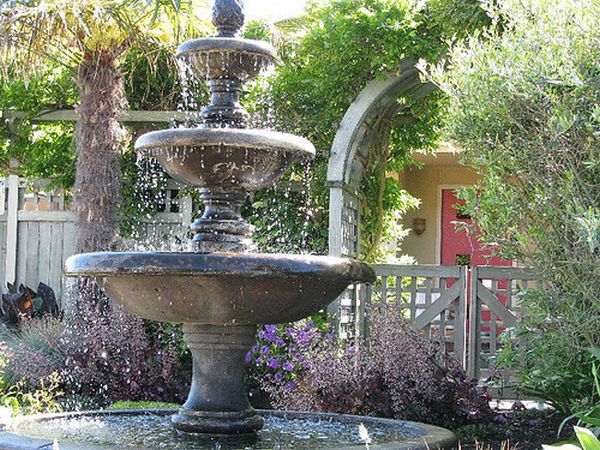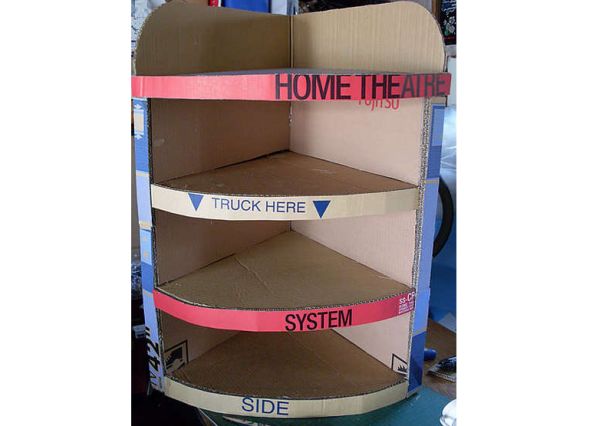
If you want to improve the look and feel of your garden, then adding a beautiful fountain would be a great idea. The relaxing sound of running water can contribute to a soothing atmosphere and make it a heaven for you and your family. Instead of spending a lot of money on a ready made fountain, you can make your own fountain from old gardening, plumbing, and kitchen supplies. You can let your creative juices flow and come up with a spectacular design to adorn your garden, patio, or backyard. Read on to learn how to make a unique, custom-made outdoor fountain on your own.
Complexity: Moderate
Resources required:
- Measuring tape
- Planter
- Pipe
- Pipe cutter
- Drill
- Flux
- Solder
- Propane torch
- Silicone sealant
- Forks and spoons
- Wire cutter
- Fountain pump
- Plastic tubing
- Scissors
Instructions:
1. Choose your space:
Before you start working on your fountain, you would need to decide where you want it placed. It should have enough room around it and must also have a convenient electrical outlet nearby which can provide power to the pump. You should also place it in such a way that the electrical chord from the fountain can be covered, probably with plants or under rock landscaping features.
2. Consider your theme:
Decide what kind of fountain you want depending on the whole theme of the environment. For example, if your yard has a more country garden feel, then you would want to make a fountain that matches the theme, or if it is an artistic feel your garden has, then go for a more contemporary fountain. If you don’t match the fountain with the background scenarios, then it can look highly out of place; no matter how amazing it looks.
3. Pump and tubing:
It is no doubt that water is an essential part of a fountain. So you will need a pump with enough power to push the water out of the fountain head. Although materials like plastic and copper can be used for the tube, rubber is considered the most versatile of all, especially for those who are inexperienced with the whole thing. To check out your possibilities, it is advisable to head to your nearest gardening store and consult a specialist.

4. Gather your supplies:
Gather all the items that you would need together, so that you don’t waste your time in-between the process to look for the tools. You would need a pump, a container for a reservoir, tubing and any other items that are vital to your fountain design. Get some small stones, a shovel, water proof caulking and some sand for further uses.
5.Make the foundation:
After making sure there are no power lines going through the ground, dig a hole and level it with enough sand. Level the reservoir on the ground for above ground fountains, or into the ground otherwise.
6. Place the pump:
Get the tubes connected and make sure the setting is set to a medium high. It should also be set in such a way that it is easily accessible and can be removed if something goes wrong with it, or in extreme weather conditions.
7. Secure the pipe:
Wrap the wire around the pipe several times in order to attach it to the planter. Finally, insert the end of the wire through a second hole in the set and then secure the wire outside the planter by twisting it together tightly.
8. Cut excess wire:
To create a neat and tidy effect, cut off any excess thread beads or wires that lie over it.
9. Seal drainage openings:
Seal off any drainage openings in the planters with silicone. Use a silicone sealant to seal the inside of one end of the copper pipe. Make sure you allow the sealant to dry completely before proceeding further.
10. Adjust the pump:
The speed at which the water comes out of the fountain head is important, as you don’t want it to spray outside the bounds of the reservoir. So adjust the speed pump till the water comes out smoothly and falls right into the reservoir.
FAQs:
Question: What are the different types of reservoirs that can be used?
Answer: Buckets, large water proof planters, rubber feed toughs, and plastic pond sheeting are all good to be used as reservoirs. Basically you can use anything large enough to hold a substantial amount of water.
Quick tips:
1. To avoid water being stagnant, keep running the pump continuously.
2. Make sure your pump is always under water when you start it, as it can otherwise burn out.
3. Add plants and other curios to the fountain to make it more fancy and more attractive.
Things to watch out for:
1. Water might get affected by algae often; so ensure to clean the water regularly.
2. Stagnant water can also breed mosquitoes; so running your fountain regularly is important.
3. Keep any electrical chords running from the fountain buried or away from other appliances as electrical circuits can be dangerous.
Via: WikiHow




